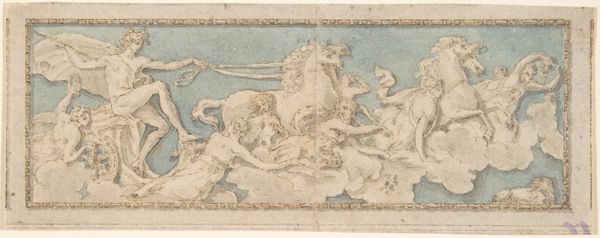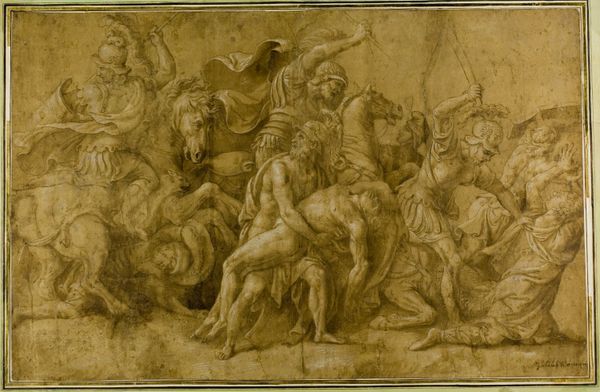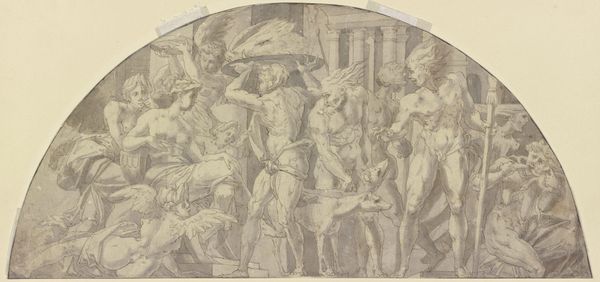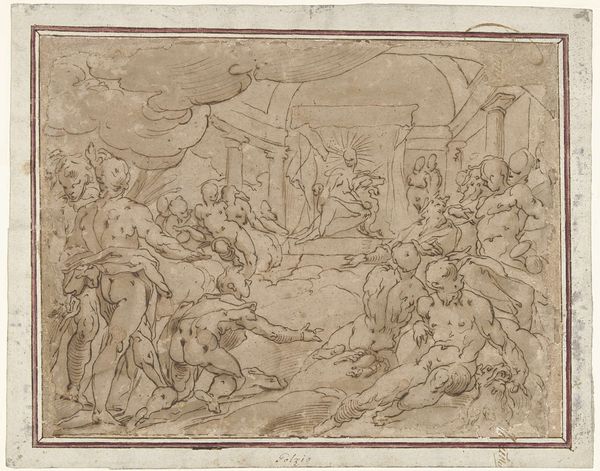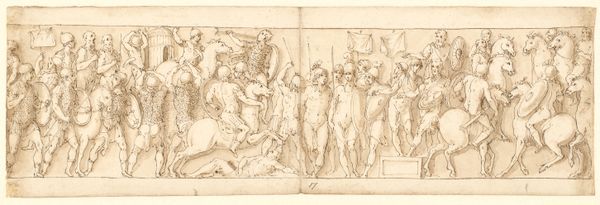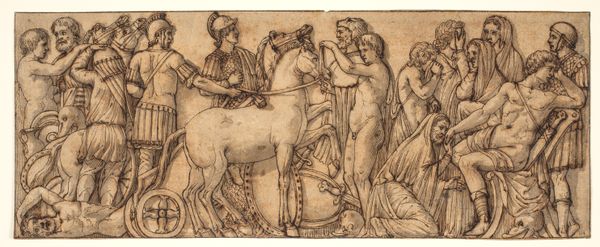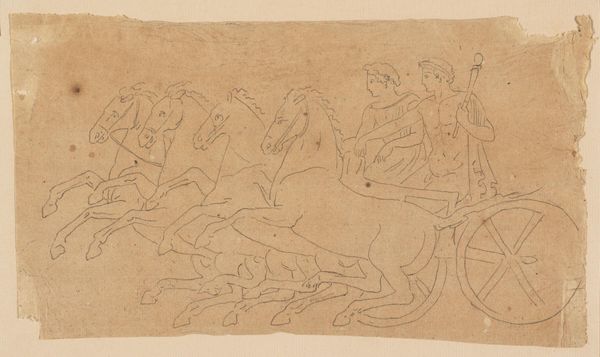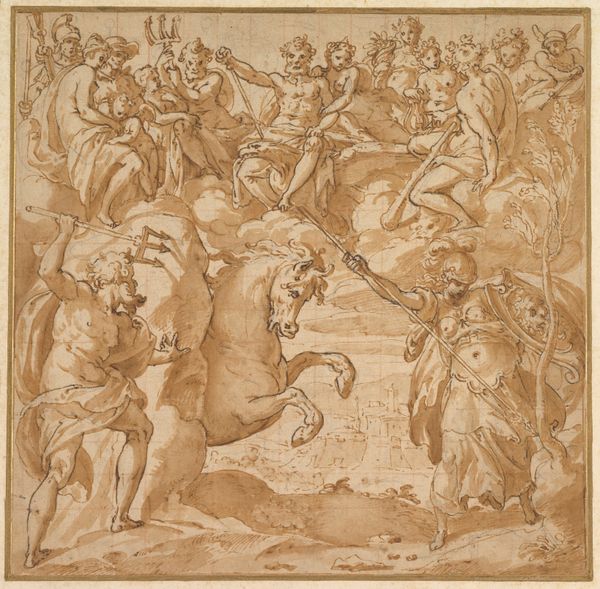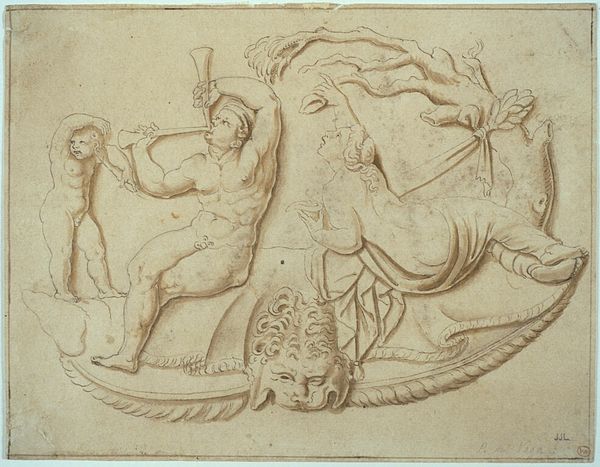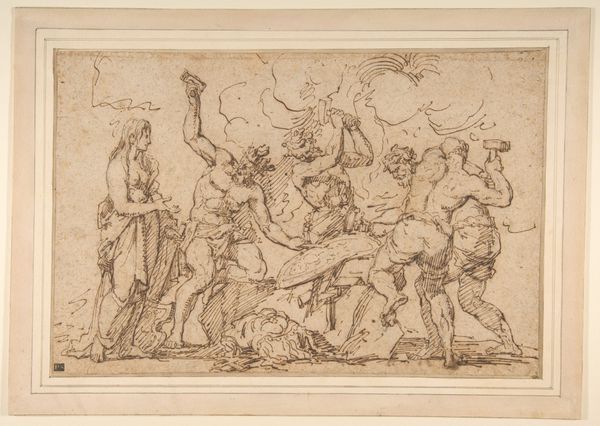
drawing
#
drawing
#
greek-and-roman-art
#
figuration
#
roman-mythology
#
mythology
#
line
#
history-painting
Copyright: Public domain
Editor: So, here we have "Battle of Centaurs and Greeks," a drawing, though undated, attributed to Bartolomé Esteban Murillo. What strikes me immediately is the dynamism conveyed purely through line – a real sense of frenetic energy despite the apparent simplicity of the medium. What do you see in this piece, beyond the mythological subject matter? Curator: Precisely. Discard the narrative, for a moment. Consider the choreography of forms. Note how Murillo exploits the linearity of his chosen medium to delineate musculature. The hatching, its direction and density, sculpts light and shadow, articulating volume on the figures, especially the centaur. Editor: So it’s less about the battle itself, and more about how it's depicted? Curator: Exactly. The power lies in the deployment of visual devices: consider how the linear composition manipulates spatial recession. Does the density of the lines not create a certain flattening effect even as it simulates three-dimensionality? Editor: That makes sense. Now that you point it out, there's a push and pull happening. The details suggest depth, but the overall effect feels almost like a relief sculpture. Curator: A perceptive observation. The strength of the line dominates. Consider the purposeful exclusion of color: how it emphasizes the pure tension created through form. This piece encourages us to dissect the strategies of representation itself, to see line not just as descriptive, but constitutive of the entire visual experience. Editor: So, by looking closely at the technique, the line work, we’re actually seeing the artist's choices in a more fundamental way. That's a powerful way to appreciate the artwork. Curator: Indeed. A focus on structure opens doors to new interpretive strategies.
Comments
No comments
Be the first to comment and join the conversation on the ultimate creative platform.
